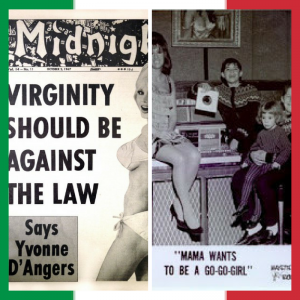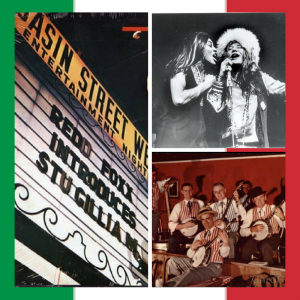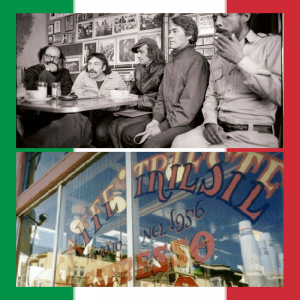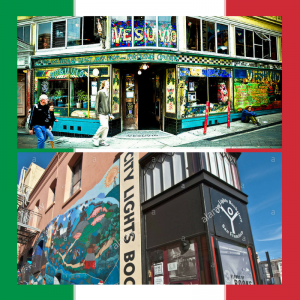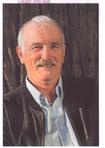John Michael McCarty's Blog, page 7
July 13, 2018
Cazadero & North Pacific Coast R.R.
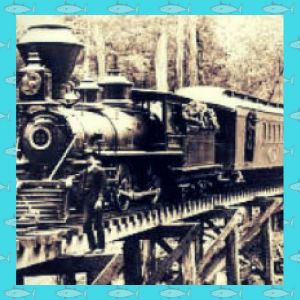 The North Pacific Coast R.R., built in the 1870’s, stretched from Sausalito to Cazadero. Mishaps along the line were plentiful. George Simpson Montgomery, who originally named Cazadero, had switched from a Bohemian Club drunkard to a born-again Christian. His insistence that the town go dry might have initiated a protest in 1894 when Engine No. 9 was hijacked by its crew and others in Duncans Mills with the intent of a party-run on one stormy night to Cazadero. The train never made it to its destination plunging into Austin Creek while attempting to cross the trestle at Elim Grove. Frank Hart, proprietor of Cazadero Hotel, had joined the liquored-up group but unfortunately fell victim to the tragedy. His body was never recovered and presumed carried out eventually to sea. Ten days later a local Native American shaman joined the search party and affixed a candle to a board and sent it on its way. Several hundred yards downstream, the candle suddenly flickered out.
The North Pacific Coast R.R., built in the 1870’s, stretched from Sausalito to Cazadero. Mishaps along the line were plentiful. George Simpson Montgomery, who originally named Cazadero, had switched from a Bohemian Club drunkard to a born-again Christian. His insistence that the town go dry might have initiated a protest in 1894 when Engine No. 9 was hijacked by its crew and others in Duncans Mills with the intent of a party-run on one stormy night to Cazadero. The train never made it to its destination plunging into Austin Creek while attempting to cross the trestle at Elim Grove. Frank Hart, proprietor of Cazadero Hotel, had joined the liquored-up group but unfortunately fell victim to the tragedy. His body was never recovered and presumed carried out eventually to sea. Ten days later a local Native American shaman joined the search party and affixed a candle to a board and sent it on its way. Several hundred yards downstream, the candle suddenly flickered out.
Cazadero Railroad Tragedy:
In the eddy of tangled brush, Joseph Sabin, Cazadero’s station agent, was recovered. In all seven men perished that night in the failed demonstration against Montgomery’s temperance regulations. Booze and religion have never been a good combo. If you have a story of Cazadero, old or new, I’d be interested in publishing it in my online newsletter next month. For samples of the one-page electronic magazine, go to www.johnmccarty.org, scroll to the bottom and click on any of the dates under “Newsletter Archives”. Happy trails!
The post Cazadero & North Pacific Coast R.R. appeared first on John McCarty.
July 12, 2018
North Pacific Coast R.R.
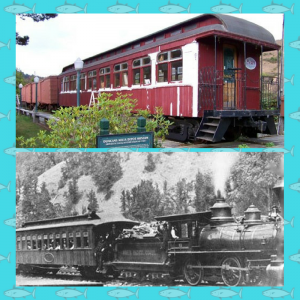 The North Pacific Coast R.R. ran from Sausalito to Cazadero via west Marin. Operated under different owners from 1877 to 1935 the line carried redwood to San Francisco and returned with weekenders who were anxious to party. From Freestone to Occidental, there was a dramatic horseshoe bend that allowed front and back passengers to gaze at each other before crossing the monstrous Browns Canyon Trestle, which at the time was the largest man-made structure west of the Mississippi. The broad gauge and narrow gauge met in Monte Rio before running down present day Moscow Road and crossing the Russian River at Duncans Mills. Nine years later the line was extended to Cazadero at the behest of the town’s founder, Silas Ingram. Much of the redwood lumber was used to help rebuild San Francisco and Santa Rosa after the 1906 earthquake. It is also said that redwood pilings from the mills were used as foundation for the Bay Bridge.
The North Pacific Coast R.R. ran from Sausalito to Cazadero via west Marin. Operated under different owners from 1877 to 1935 the line carried redwood to San Francisco and returned with weekenders who were anxious to party. From Freestone to Occidental, there was a dramatic horseshoe bend that allowed front and back passengers to gaze at each other before crossing the monstrous Browns Canyon Trestle, which at the time was the largest man-made structure west of the Mississippi. The broad gauge and narrow gauge met in Monte Rio before running down present day Moscow Road and crossing the Russian River at Duncans Mills. Nine years later the line was extended to Cazadero at the behest of the town’s founder, Silas Ingram. Much of the redwood lumber was used to help rebuild San Francisco and Santa Rosa after the 1906 earthquake. It is also said that redwood pilings from the mills were used as foundation for the Bay Bridge.
Disaster Strikes the Railroad:
On September 17, 1923 a moonshine still blew up, igniting a blaze that roared through the lumber mills from Guerneville through Cazadero and Duncans Mills to Jenner. This was the beginning of the end. With the lumber trade on the fritz, passenger service picked up the slack over the standard gauge track. Service existed to and from Cazadero with a daily passenger average of nearly 225. The Northwestern Pacific Railroad offered “dollar days” on the weekend with a roundtrip fare of $1.25 from San Francisco to any point along the Russian River. And then the Depression arrived in earnest with the NWP running over a million dollars in the red. The last train out of Cazadero was on July 31, 1933 while the Guerneville route lasted only two more years. Locals mobbed the passenger cars for the final ride and partied to the next stop. Some inebriated souls lost track of time (and consciousness) to find themselves awakening in Sausalito with no financial means to purchase a return ticket. Or so the story goes.
The post North Pacific Coast R.R. appeared first on John McCarty.
July 6, 2018
Cazadero is Born
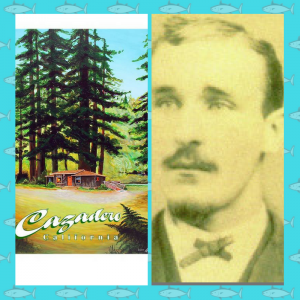 Just a few years ago in 2007, the entire town of Cazadero was for sale on the cheap. A similar occurrence happened in 1888. Despite being the rainiest place in the state (85 inches/year), the area has always had a certain appeal. This was true from the early beginning when George Simpson Montgomery purchased Ingrams and changed its name to Cazadero, which is Spanish for “The Hunting Place”.
Just a few years ago in 2007, the entire town of Cazadero was for sale on the cheap. A similar occurrence happened in 1888. Despite being the rainiest place in the state (85 inches/year), the area has always had a certain appeal. This was true from the early beginning when George Simpson Montgomery purchased Ingrams and changed its name to Cazadero, which is Spanish for “The Hunting Place”.
At the time George was living at the Palace Hotel in San Francisco and holding membership in the exclusive Bohemian Club. Probably due to peer pressure, he soon developed into a two-fisted drinker with a reputation for visiting the brothels of a City that knows how. His wife ventured in the opposite direction, establishing a ministry. Her book, Prayer of Faith, was translated into eight languages and sold over four hundred thousand copies worldwide. A few years later her husband saw the evils of his ways (what are the chances?) and converted to Christianity.
Cazadero Goes Dry?
At the insistence of his wife, George Montgomery attempted to convince the local ruffians of Cazadero to go dry. In addition he forbade any gambling. If one did not obey these regulations, Montgomery blocked the person’s business activities with heavy tax penalties. I ask you, what kind of decent, civilized municipality would turn its back on a little sin? After all, the bible (or maybe it was my grandfather) says that God works harder for sinners. Well, He sure had his work cut out for Him in Cazadero with all the bootleg stills in the nearby hills and plenty of lumber mill roustabouts wanting to wet their whistles and spend their week’s wages on a game of chance. As is often the case, wickedness won out over virtue and the locals had their way. Would we have wanted history to turn out any different? I think not. A minor transgression here and there keeps us from falling asleep while traveling down the straight and narrow byways of life. Next time: railroad mishaps in and around Cazadero.
The post Cazadero is Born appeared first on John McCarty.
July 4, 2018
Cazadero, the Early Days
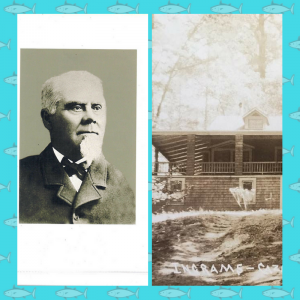 Cazadero, the early days, was a tale created by a conflicted family. Silas Ingram and his wife joined a wagon train bound for California in 1840. While crossing the plains of Utah, they were attacked by a band if Indians who killed several in the party as well as absconding with the mules. Ingram was forced to walk over 100 miles to Salt Lake City where he caught transportation to San Francisco.
Cazadero, the early days, was a tale created by a conflicted family. Silas Ingram and his wife joined a wagon train bound for California in 1840. While crossing the plains of Utah, they were attacked by a band if Indians who killed several in the party as well as absconding with the mules. Ingram was forced to walk over 100 miles to Salt Lake City where he caught transportation to San Francisco.
He later acquired federal timber land and moved his family to Sebastopol to be near his new enterprise along Austin Creek. He soon established a hunting resort in the rural area in 1869, naming it Ingrams. Silas became the first post master of the town. However, the mail was often not delivered on time or delivered at all. That was because it was pilfered on a regular basis. In an awkward twist of history, the culprit turned out to be none other than Silas’s own son, Charles, who later confessed to the crime and served eighteen months in jail. Tsk, tsk.
Ingram and the Railroad:
The Feds refused to recognize the town as Ingrams, labeling the post office as “Austin”. After considerable negotiating and political persuasion, Silas was able to convince the North Pacific Coast Railroad to extend its line from Duncans Mills in 1886. This was the final argument needed, and the U.S. Post Office changed the name of the location permanently to honor Silas’s surname. Silas Ingram kept his property in the hills, which is currently known as Lions Head Ranch. He died on June 8, 1900 and is buried at the Redwood Cemetery in Guerneville. But when and how did Ingrams become Cazadero? Stay tuned.
The post Cazadero, the Early Days appeared first on John McCarty.
June 13, 2018
Italian Restaurants in San Francisco
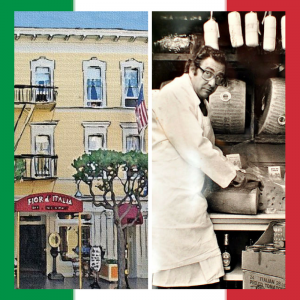 Italian restaurants in San Francisco are articles of export. The energies of many immigrants from Italy to the U.S. went into introducing their “old country” culinary expertise to create a viable industry in San Francisco. Such efforts were not officially recognized by the critics until Holiday Magazine made note in the 1950’s. Fior d’Italia is the city’s oldest surviving Italian restaurant established in 1886. Buon Gusto has created the best sausage since the seventies, featuring Genoese pasta with pesto as well as polenta with cioppino. Julius’ Castle is still known for its zucchini Florentine. Lucca Deli has served the Marina District at the same location since 1929. Salami hanging from the ceiling and wheels of cheese in open racks introduce you to employees who still roll their ravioli by hand to achieve a light and tender product. Tommaso’s opened in North Beach in 1935 with the first wood-fire brick pizza oven on the West Coast.
Italian restaurants in San Francisco are articles of export. The energies of many immigrants from Italy to the U.S. went into introducing their “old country” culinary expertise to create a viable industry in San Francisco. Such efforts were not officially recognized by the critics until Holiday Magazine made note in the 1950’s. Fior d’Italia is the city’s oldest surviving Italian restaurant established in 1886. Buon Gusto has created the best sausage since the seventies, featuring Genoese pasta with pesto as well as polenta with cioppino. Julius’ Castle is still known for its zucchini Florentine. Lucca Deli has served the Marina District at the same location since 1929. Salami hanging from the ceiling and wheels of cheese in open racks introduce you to employees who still roll their ravioli by hand to achieve a light and tender product. Tommaso’s opened in North Beach in 1935 with the first wood-fire brick pizza oven on the West Coast.
Family run businesses:
In the tradition of family run businesses, Agostino of Tommaso’s makes the pizza dough while sister Lydia serves as executive chef. Sister Carmen waits on the tables along with her mother Anna. Dante Benedetti (R.I.P.) would drag wayward kids off the streets to work in his New Pisa restaurant alongside his daughters Luna and Carmen. Dante (who later became the baseball coach at U.S.F.) is credited with discovering the DiMaggio brothers, replacing their fishing poles with baseball bats. Such examples of the Italian spirit still exist today through these establishments and so many others despite the winds of change. As Italians leave for the suburbs, Chinese occupy empty storefronts in North Beach. Hunan’s restaurant is a typical example of this shift. Also, the high rents of Telegraph Hill and the surrounding neighborhood are introducing a mixed bag of “outsiders”.
The post Italian Restaurants in San Francisco appeared first on John McCarty.
June 10, 2018
Broadway in the City, Part III
Two dancers that rivaled Carol Doda on the Broadway nightclub scene were Yvonne D’Angers and Gaye Spiegelman. Born in Tehran, Iran, D’Angers’ nickname was Persian Lamb. Her main haunt was the Off Broadway on Kearny St. whose client list also included Doda and a topless girl-band called The Ladybirds. In a publicity stunt, D’Angers chained herself to the Golden Gate Bridge to protest her deportation to Iran, which was overturned in 1968.
Gaye Spiegelman was a graduate of Santa Rosa High School in Sonoma County and danced at the El Cid where the marquee billed her as “The Topless Mother of Eight”. Her act also included singing. She recorded a not too popular single with Accent Records titled “Momma Wants to be a Go-Go Girl”. In a tragic car accident in 1968, she died along with three of her children.
Broadway:
Mayor Jack Shelley declared that a criminal element had moved into the North Beach area of Broadway and that “The topless craze was at the bottom of the whole problem.” Doda, D’Angers and Spiegelman were arrested along with other dancers. It took nineteen minutes for a jury to acquit them. By the 1980’s, however, the strip clubs were on the wane. In a brief flurry of experimentation, the neighborhood gained, and then lost, a topless shoeshine parlor, a topless ice cream stand, a topless band and two competing topless dancers who performed with live boa constrictors. El Cid was a typical example, closing in 1988 –the victim of a vanishing fan base and high rents. This was the end of one era and the beginning of another as Broadway no longer became the dividing line between North Beach and Chinatown. El Cid nightclub was transformed into a Chinese bakery.
The post Broadway in the City, Part III appeared first on John McCarty.
June 8, 2018
Broadway in the City, Part II
Besides the strip clubs, there was family entertainment along Broadway as well during the 1960’s. Basin Street West featured breakfast shows, which started around 2:30 a.m. On one particular morning Tina Turner was the featured star. Janis Joplin, who had drifted in after her performance at Winterland, was in the audience. When introduced, she jumped on stage as Tina gave her the old “stink eye”. A vocal duel ensued for the next two hours where Tina would belt out “Proud Mary” before handing the mic to Janis with a dare. Janis took on the challenge with “Piece of My Heart” and so it went on until the house lights came on, forcing them to stop at 4:30 a.m. to the chagrin of all present. In his next column, Herb Caen lamented he had missed such an iconic moment.
Broadway:
In an annual act of charity, comedian Redd Foxx and other performers along Broadway made a field trip to San Quentin to entertain the boys for the Christmas holiday. Coincidentally, there had been an escape attempt from the prison the week before that failed because the rope the escapees used broke. At the end of his act, Foxx invited the inmates to visit him at Basin Street West “if you can get a new rope.” Everyone including the guards cracked up.
Another venue, The Red Garter, was singularly responsible for reviving the banjo craze. Harry Higgins and his band played for eighteen years until the club closed in 1976. For five nights a week, nearly 500 people packed the house. It was a beer joint with a New Orleans vibe. Sing-along songs such as “When the Saints Come Marching In” or “California Here I Come” were among tourists’ favorites. Higgins logged more than 25,000 hours, setting a national record for the longest running banjo player.
The post Broadway in the City, Part II appeared first on John McCarty.
June 4, 2018
Broadway in the City
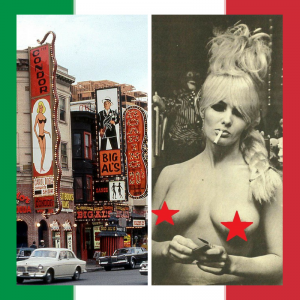 North Beach used to be part of the Barbary Coast, a district known during the gold rush days for prostitution and crime. During the 1960s, adult entertainment returned to Broadway, San Francisco, as a sort of cheeky celebration of those Wild West days. The Condor Club opened in 1964 as America’s first topless bar. Carol Doda would make her grand entrance dancing seductively atop a piano, which was lowered from on high. She enhanced her bust from size 34 to 44 through silicone injections. Her breasts became known as Doda’s “twin 44s” and the new “Twin Peaks of San Francisco”. Much later in 1983 this same piano would accidentally rise to the ceiling, crushing to death “Jimmy the Beard” Ferrozzo who was lying atop his girlfriend.
North Beach used to be part of the Barbary Coast, a district known during the gold rush days for prostitution and crime. During the 1960s, adult entertainment returned to Broadway, San Francisco, as a sort of cheeky celebration of those Wild West days. The Condor Club opened in 1964 as America’s first topless bar. Carol Doda would make her grand entrance dancing seductively atop a piano, which was lowered from on high. She enhanced her bust from size 34 to 44 through silicone injections. Her breasts became known as Doda’s “twin 44s” and the new “Twin Peaks of San Francisco”. Much later in 1983 this same piano would accidentally rise to the ceiling, crushing to death “Jimmy the Beard” Ferrozzo who was lying atop his girlfriend.
Art Norack owned or was a partner in almost every club along the strip.
Broadway:
Art’s list of establishments on Broadway included El Cid, the Peppermint Tree, Pierre’s and Basin Street West. To name a few entertainers who performed at these venues–there was Duke Ellington, Lionel Hampton, Dave Brubeck, Janis Joplin, Redd Foxx, Richard Pryor, Ike & Tina Turner, all at Basin Street West and Little Richard at the Peppermint Tree and “Topless Mother of Eight” Gaye Spiegelman at El Cid. Tom Sullivan remembers he and two buddies dancing on stage with a topless performer at the Peppermint Tree. The girl was cooperative, perhaps enjoying the attention her act received from the street. No less than thirty Japanese sailors in their white uniforms stood head-piled-atop-head within the doorframe.
Next time we will revisit 1960’s Broadway with more stories. Stay tuned. Cheers!
The post Broadway in the City appeared first on John McCarty.
June 1, 2018
The Beatnik Era, Part Two
During the 1950s, the beatniks in North Beach would gather on the oldest street in San Francisco—Grant Avenue, which terminated with a narrow, four-block corridor crammed with bars, galleries, art shops, bookstores and Italian bakeries. Besides Vesuvio’s, City Lights, The Cellars, and Co-Existence Bagel Shop, other popular venues for these unconventional free-spirits were the Coffee Gallery and The Place. A few older local entrepreneurs, however, often vied with consumers over the “value” of these bohemians. Charges were placed with police that some of these establishments, such as Caffe Trieste, sold bootlegged whiskey. While the majority of the locals did not share this sentiment, a small conservative residential group demanded a crackdown in the summer of 1957.
The Beatniks:
A petition was submitted to city officials complaining that when these “maladjusted anti-social individuals” roiled the night air with their fights, obscenities, singing, and musical instruments, policemen did nothing to stop the disturbances. Patrolmen soon changed their ways and actually started arresting citizens who would not assist in the apprehension of law-breaking beatniks. With the increase in both harassment and rents, this coffee-house clientele began to drift away. Grant Avenue, once described as “an open-air mental hospital three blocks long”, was being vacated.
The post The Beatnik Era, Part Two appeared first on John McCarty.
May 27, 2018
The Beatnik Era, Part One
The Beatnik Era took hold in the North Beach area of San Francisco for many reasons. The district already owned a reputation for permissiveness by looking the other way when it came to the speakeasies during Prohibition and the sex-entertainment industry of the 1940’s. North Beach’s vibrant bar and café scene, physical isolation and low rents were big selling points as well. In addition, the postwar growth of the California School of Fine Arts on nearby Russian Hill plus the influx of writers propelled a beat movement, which began in 1953. Jack Kerouac’s On the Road drew national attention. When the police tried to suppress Allen Ginsberg’s poem, “Howl”, the resulting media frenzy backfired. Young people flocked to North Beach in an attempt to escape the drab routine of the nine-to-five, gray-flannel syndrome.
Beatnik Era:
North Beach had more of a European atmosphere instilling a bohemian culture where first-generation Italians have always welcomed the idea of writers in their midst. Being an artist was considered a legitimate occupation—the same as being a fisherman. Vesuvio Café on Columbus Avenue opened to accommodate these new residents. Poet Lawrence Ferlinghetti launched City Lights Pocket Book Shop next door. The Cellar hosted poetry readings and jazz in its subterranean café and bar.
But not all was as it first appeared. The Co-Existence Bagel Shop transformed the corner of Grant Avenue and Green Street into the epicenter of the neighborhood’s burgeoning beat scene. But the owner did not care for the element and persuaded the police to park a paddy wagon nearby. In an act of protest, an unknown party blew up the plumbing in the restroom. This was the beginning of the end. Next time we’ll discuss the continued downfall of the beatnik scene in North Beach. Until then, be careful out there. Cheers!
The post The Beatnik Era, Part One appeared first on John McCarty.

